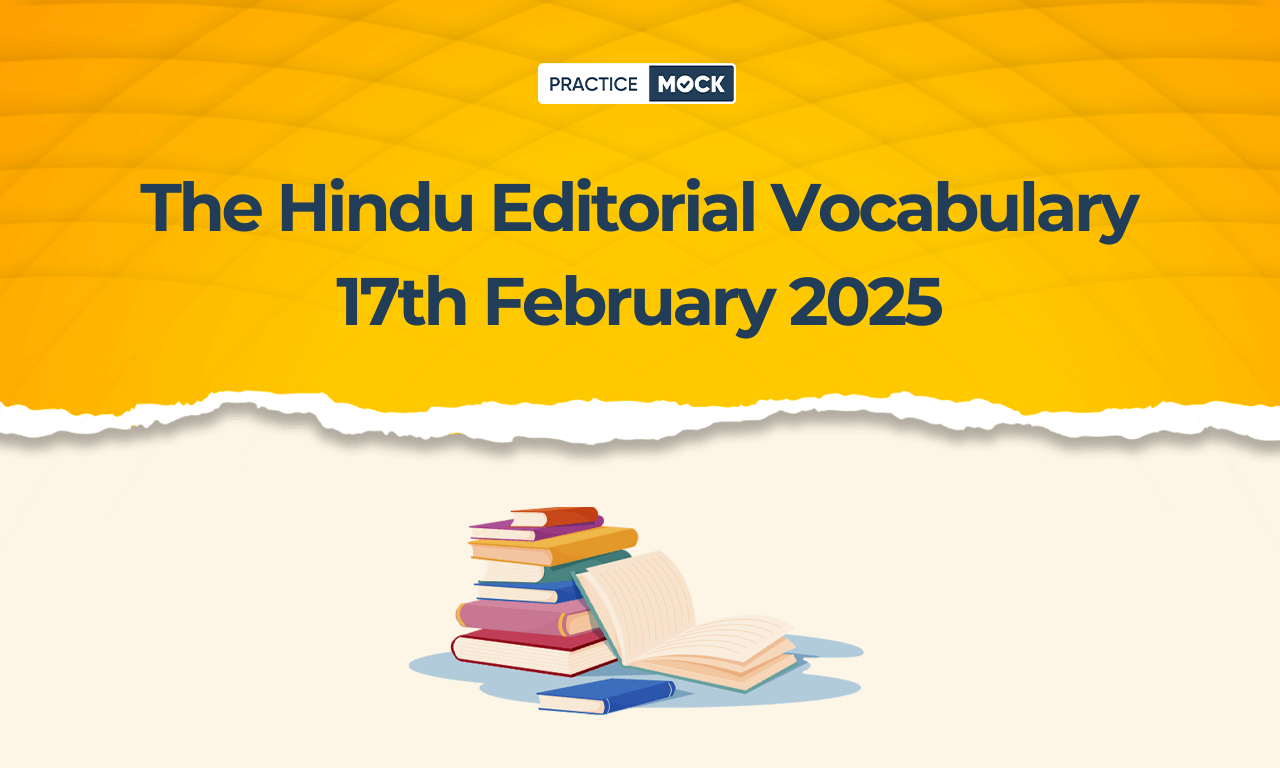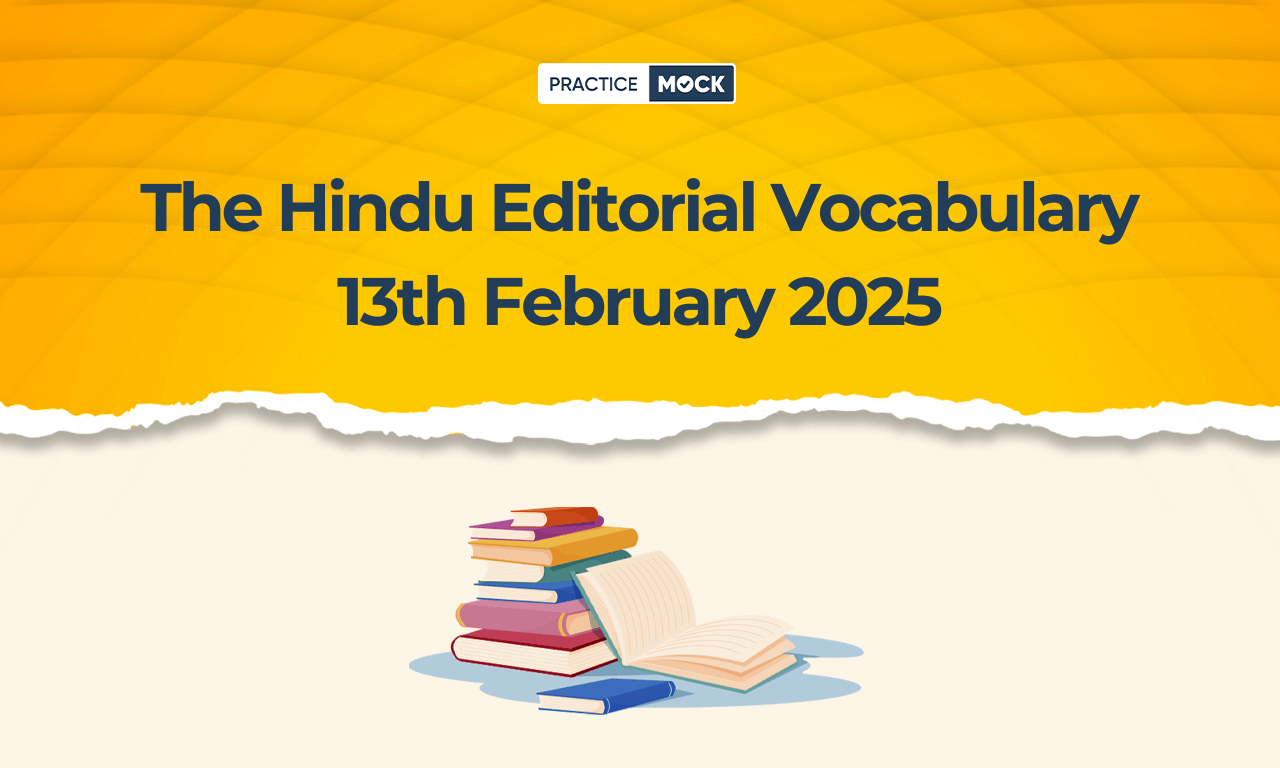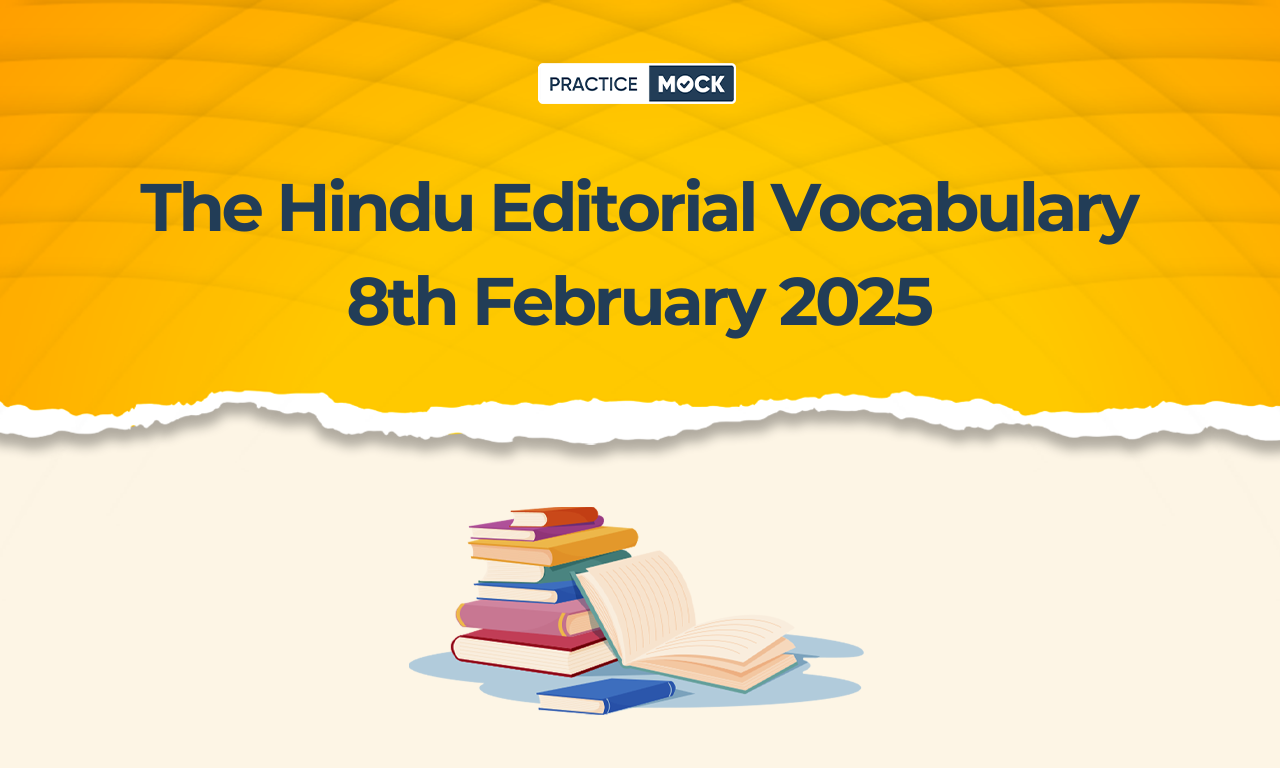

The importance of reading editorials of reputed newspapers is not hidden from anybody. What causes obstruction are difficult words which act like speed-breakers forcing you to either refer to a dictionary for its meaning or simply guess it. While getting the meaning from the dictionary is the best way to understand it, sometimes a dictionary is not within your reach. Also, a number of aspirants get confused when they see more than one meaning next to a word in a dictionary. It becomes a difficult process for them to pick the relevant meaning.
We at PracticeMock understand this and that’s why we have come up with a series of Editorials’ Difficult Words where we shortlist the important editorials of the day and pick the difficult words/ phrases therein. Next to the word, we put only the contextual sense of the word/ phrase so that you don’t get confused. Now let’s go through today’s editorial.
| Difficult Word/ Phrase | Contextual Sense |
| Pare | reduce (something) in size, extent, or quantity in a number of small successive stages |
| Purist | a person who insists on absolute adherence to traditional rules or structures, especially in language or style |
| Anomalous | deviating from what is standard, normal, or expected |
| Sovereign | used to describe money that is borrowed or invested by national governments |
| Peg | fix (a rate) at a particular level |
| Spur | give an incentive or encouragement to (someone) |
| Disintermediation | reduction in the use of intermediaries between producers and consumers, for example by investing directly in the securities market rather than through a bank |
| G-Sec | a tradeable instrument issued by the Central Government or the State Governments |
| Augur well for | to indicate or predict good things for someone or something |
| Bond vigilante | Any of the large bond market investors who aggressively sell government bonds in the open market as a mark of protest against the policies adopted by the government or the central bank of a country |
Take PSCB Clerk Free Mock Test Now
Saving grace
Post Office savings schemes are favoured by senior citizens for their higher interest rates – Mohammed Yousuf
The Finance Ministry has done well not to pare (reduce (something) in size, extent, or quantity in a number of small successive stages) small savings rate in these times
The Centre has done well to preserve the status quo on small savings schemes in a time of rising inflation and pressure on incomes. Interest rates on post office schemes favoured by retail savers, senior citizens and monthly income seekers have been left unchanged for the fifth consecutive quarter. While purists (a person who insists on absolute adherence to traditional rules or structures, especially in language or style) may argue that it is anomalous (deviating from what is standard, normal, or expected) for sovereign (used to describe money that is borrowed or invested by national governments)-backed instruments to offer higher rates than bank deposits, there was limited logic for trimming these rates now. Amidst the global debate on resurgent inflation, India’s CPI and WPI prints have surprised on the upside and yields on the 5-year government security to which small savings rates are supposed to be pegged (fix (a rate) at a particular level), have risen about 25 basis points to 5.75 per cent, making it imperative to protect real returns for savers.
Traditionally, India’s net household savings have been positive, in the process funding the negative savings of the government sector (the Centre, States and public sector) without creating any serious macroeconomic imbalance, post 1991. However, gross household savings (a trend level of about 15 per cent of GDP) constitutes about half the total savings now, while this proportion was closer to two thirds about a decade back. Given the need to boost growth and physical and social infrastructure, it is crucial that net household savings pick up from the current level of about 10 per cent of GDP. Debt-financed growth will lead to rising market interest rates and currency volatility. The RBI cannot sustain its unconventional monetary policies to keep rates in check for borrowers for all time to come; the interest rate must reflect the current account deficit or savings-investment gap.
Take PSCB Clerk Free Mock Test Now
A sustained regime of real negative interest rates via a suppressed yield curve will spur (give an incentive or encouragement to (someone)) disintermediation (reduction in the use of intermediaries between producers and consumers, for example by investing directly in the securities market rather than through a bank) into physical assets or in risky investments, creating an asset bubble that has been associated with over two decades of loose monetary policy worldwide. Former RBI Governor Raghuram Rajan had mooted a real interest rate of 1.5-2 per cent as the benchmark (calculated as the difference between the one-year G-sec yield and retail inflation). The present one-year G-Sec (a tradeable instrument issued by the Central Government or the State Governments) yield converges with the repo rate of 4 per cent, whereas it was about 40-50 basis points higher a few years ago. At present a real interest rate of minus 2 per cent thus calculated, which has been around for a year, does not augur well for (to indicate or predict good things for someone or something) savers. While in the short term, they may continue to save more to offset the low returns, or consume more, net savings in the medium term will suffer. Monetary Policy Committee member Mridul Saggar has observed that “not all savers may necessarily be worse off when central banks push down the interest rates”, which is perhaps true only in the short run. Without being persuaded by bond vigilantes (any of the large bond market investors who aggressively sell government bonds in the open market as a mark of protest against the policies adopted by the government or the central bank of a country) who overreact to accommodative policies, it is important to recognise that interest rates must take savers’ interests into account.
Hope you got to know some new words/phrases which will definitely be useful in the English section of upcoming competitive exams. Wishing you all the best for your preparation!
Want to improve your vocabulary further? Download the Lists of Word-Meanings of Previous Months here.
Recent Posts
Career Growth and Promotions for RBI Grade B Officers
Learn about the career growth and promotion structure for RBI Grade B officers and how…
300+ Reasoning Important Questions For BOB Apprentice 2025 Exam
In this article we are providing the 300+ Reasoning Important Questions For the BOB Apprentice…
Step-by-Step Preparation Strategy for PNB SO 2025 Exam
In this article we are providing the Step-by-Step Preparation Strategy for PNB SO 2025 Exam,…
IBPS PO Syllabus 2025, Check Prelims & Mains Detailed Syllabus
IBPS PO Syllabus 2025 will be released along with a notification pdf. Candidates can check…
What is the probation period for RBI grade B officers?
Learn about the RBI Grade B probation period, its importance, and how it shapes officers'…
IBPS SO Syllabus 2025, Check Prelims & Mains Pattern and Syllabus
IBPS SO Syllabus 2025 will be released on the official website. Candidates can check Prelims…


